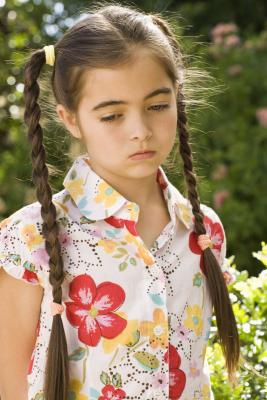Childhood depression goes beyond sadness, which is a normal childhood emotion. Depression is a treatable condition faced by some children with persistent sadness that interrupts every day life. Parents may feel helpless, guilty, frustrated or confused when a child exhibits signs of depression. Understanding the basics of depression in school-age children helps parents proceed with diagnosis and treatment.
Statistics
Depression affects approximately 2.5 percent of kids, according to WebMD. Boys tend to have a higher chance of depression until age 10. Girls catch up and exceed boys in depression rates when they reach 16.
Symptoms
Depression symptoms vary from child to child. The severity of the symptoms also varies. Any depression symptoms that don’t go away are cause for concern and should be reason to get help for your child. Symptoms include frequent sadness, crying, loss of interest in activities, feeling hopeless, social withdrawal, poor self-esteem, irritability and concentration difficulty. Depression manifests itself as physical symptoms in some children. Headaches, stomachaches, appetite changes and sleep changes are examples. Some depressed children try to hurt themselves or talk about suicide.
Causes
Causes of depression also vary for children. Some children are more prone to depression due to genetic coding. Chemical disturbances in the brain may be to blame for some childhood depression. Major changes or negative events in the child’s life can contribute to depression. This might include divorce of parents, death, bullying, problems at home or a major move.
Diagnosis
A professional, medical diagnosis is necessary to identify childhood depression accurately. A psychologist or psychiatrist performs an evaluation of the child. She analyzes the child’s symptoms and the duration to determine the diagnosis. Major depression, dysthymia and bipolar disorder are possible diagnoses. Dysthymia is a less-severe form of depression that doesn’t cause major disruptions to the child’s daily life. Bipolar disorder causes the child to vary from a depressed state to mania characterized by extreme energy and irritability.
Treatment
A personalized treatment plan for the child follows the medical diagnosis. A combination of treatments is often used. Counseling is a common treatment option. The child might attend individual and family counseling sessions. Medication is sometimes prescribed in addition to the counseling. Parents need to take responsibility for medication administration and counseling session attendance. Emotional support is also a key role of the parents.





